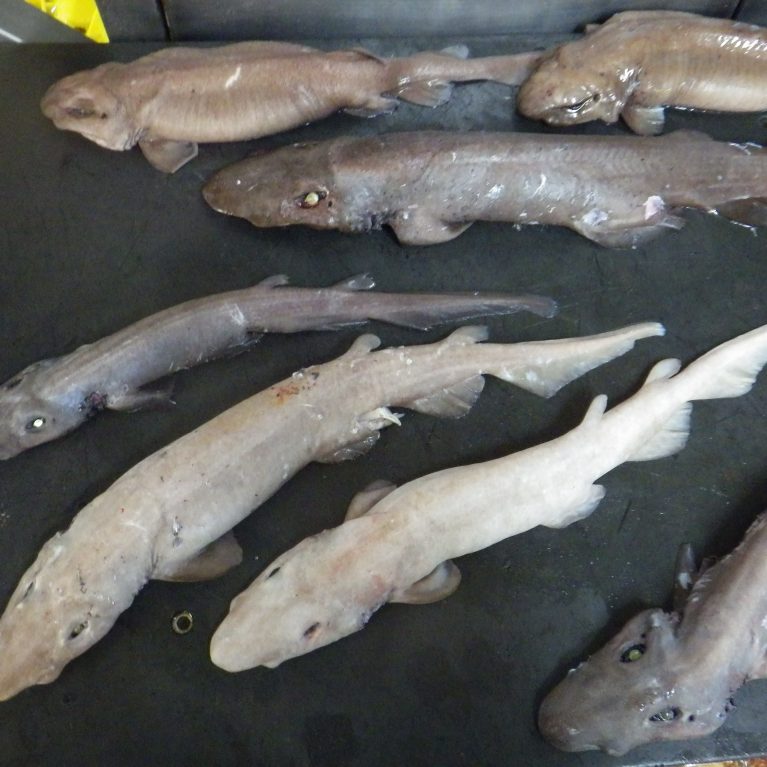Return to the unknown: discovering deep-sea sharks
Beneath the ocean’s surface are underwater mountains, the tops of which are isolated ecosystems where unique and diverse organisms evolve. Paul is one of the world’s few deep-sea shark explorers.
Return to the unknown: exploring the Southern Indian Ocean's mysterious 90 East Ridge
The primary aim of this project is to survey and catalogue deep-sea and pelagic chondrichthyan species collected as by-catch by a deep-sea commercial trawler during a 100-day expedition to remote and relatively unexplored regions of the Southern Indian Ocean.
Sea mounts and ridges of the Southern Indian Ocean are extremely isolated topographic features, which function as submerged islands separated by an expanse of great depth. This isolation promotes speciation and leads to highly diverse ecosystems. Previous surveys in the region uncovered an extraordinary number of unknown species, and a trip to the neighbouring 90 East Ridge is expected to yield an equal number of new discoveries. The primary challenge of this project is to discover new species of sharks, which is the first and most important step in species conservation and sustainable management. The protection of unknown or poorly understood sharks species requires an understanding of their life history characteristics, location and migration. Without this information, policy development is impossible.
The Southern Indian Ocean has been recognised as one of the world’s last unexplored regions. Because of its remoteness, the Southern Indian Ocean’s depths have only recently been accessible, mostly due to the development of deep-sea fisheries in this area. Because the area is difficult and expensive to access, virtually nothing is known about the fauna and ecology of these seamount ecosystems or the impact that commercial fishing has on their population structure, community dynamics and trophic interactions.
Sharks are keystone predators, controlling fauna populations in the food web. Deep-sea elasmobranchs have low fecundity and a slow rate of reproduction. Their overexploitation could greatly affect the vulnerable and unique ecosystems of the Southern Indian Ocean’s deep-sea sea mounts.
Two very successful expeditions along the Melville Ridge in the Southern Indian Ocean uncovered a dozen new species and valuable data on rare and poorly known species. A trip to the unexplored 90 East Ridge promises to discover additional new species and collect more valuable data.
- Discover new shark species. The two previous expeditions to the Southern Indian Ocean collected approximately one new shark species per week. The area is extremely understudied and appears to hold many undiscovered species. A venture to the 90 East Ridge holds the possibility of more new discoveries.
- Collect life history data. There is little to nothing known about many of the species in this area. A voyage to 90 East Ridge will greatly contribute to our understanding of the life history and habitat use of these rare animals. This is a crucial step towards responsible management of deep-sea species.
- Collect genetic material. Tissue will be collected from newly-encounter species and sent to collaborating researchers for DNA sequencing in an effort to map the genetic linage of all extant elasmobranches.
- Photo- (and video-) document sampled elasmobranches. Visual documentation is key for sharing findings with both the scientific community and the public. The second expedition was very well-documented by Discovery Channel’s Shark Week, and an expedition to 90 East Ridge will warrant high-profile coverage, as well.
- Promote the conservation of elasmobranches. The project will contribute additional specimens, samples, data and images that will generate journal articles and add to our understanding of sharks of the Southern Indian Ocean.

